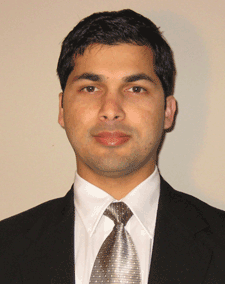
DISTINGUISHED LECTURER
Edwin L. “Ned” Thomas
William and Stephanie Sick Dean,
George R. Brown School of Engineering Rice University
Thursday, October 25, 2012
Dodd Konover Auditorium
4:00 P.M.
INDISTINGUISHABLE FROM MAGIC?
A Perspective on Some Aspects of Materials Research in the Next Decade.
Multifunctional Materials: The Mighty Electron, the Cool Photon and the Lowly Phonon…
Problem Driven Research: Improving Sets of Properties.
Creating the Magic: Synthetic MetaMaterials. MetaMaterials blur the distinction and
bridge the regime in between engineered microstructured materials with their enhanced
properties of the traditional type and multicomponent structured devices that can display functionality (amplification, filtering, sensing, etc.). Such material systems open a whole new range of heretofore unimagined material system behaviors (e.g., cloaking).

Friday, October 26, 2012
Institute of Materials Science
Room 20
11:00 A.M.
New Ideas to Manipulate the Mechanical Behavior of Polymeric Materials – from Phonons to Ballistics to Shock
Several examples will be described including the design of structures for multispectral band gaps for elastic waves to alter the phonon density of states, the creation of block polymer and bicontinuous metal-carbon nanoframes for structures that are robust against ballistic projectiles and quasi-crystalline solid/fluid structures that can steer shock waves.

Edwin L. “Ned” Thomas is the William and Stephanie Sick Dean of the George R. Brown School of Engineering at Rice University. He holds joint appointments with the Department of Mechanical Engineering and Materials Science and Department of Chemical and Biomolecular Engineering, and frequently collaborates with faculty in the Richard E. Smalley Institute for Nanoscale Science and Technology.
Dr. Thomas joined Rice from MIT, where he was first the founder and director of the MIT Institute for Soldier Nanotechnology (2002-2006) and then the head of the Department of Materials Science and Engineering (2006-2011). Preceding his career at MIT, Thomas founded and co-directed the Institute for Interface Science and headed the Department of Polymer Science and Engineering at the University of Massachusetts.
Thomas is a scientist and engineer passionate about promoting engineering leadership and student design competitions. His research focuses on using 2D and 3D lithography, direct-write, and self-assembly techniques for creating metamaterials with unprecedented mechanical and thermal properties. He is the recipient of numerous awards from the American Physical Society, American Chemical Society, Materials Society, and the American Association for the Advancement of Science, and was inducted into the National Academy of Engineering in 2009. He wrote the undergraduate textbook The Structure of Materials and has coauthored more than 400 papers and 15 patents.




 Hom Sharma, a Ph.D. candidate from the CMBE department, has received a highly competitive and prestigious Science to Achieve Results (STAR) Fellowship from The U.S. Environmental Protection Agency. This federal government award is limited to the country’s most outstanding graduate students in environmental science-related fields. The fellowship provides $126,000 over a three-year period to cover full tuition, a stipend, and research expenses. The fellowship has been awarded to the proposal titled “Computational and experimental investigation of catalyst deactivation to design sulfur resistant emissions oxidation catalysts” submitted to EPA. Hom is the first graduate student to receive the EPA STAR fellowship from UConn School of Engineering.
Hom Sharma, a Ph.D. candidate from the CMBE department, has received a highly competitive and prestigious Science to Achieve Results (STAR) Fellowship from The U.S. Environmental Protection Agency. This federal government award is limited to the country’s most outstanding graduate students in environmental science-related fields. The fellowship provides $126,000 over a three-year period to cover full tuition, a stipend, and research expenses. The fellowship has been awarded to the proposal titled “Computational and experimental investigation of catalyst deactivation to design sulfur resistant emissions oxidation catalysts” submitted to EPA. Hom is the first graduate student to receive the EPA STAR fellowship from UConn School of Engineering.